For collectors of prehistoric fishes 2021 has been a banner year, it saw the release of several toy fishes and two of them weren’t an O. megalodon or Dunkleosteus. Astonishing! Of course, we got those too. Papo tackled the meg. and PNSO released their own Dunkleosteus. But the real headliners were the Helicoprion by PNSO and the subject of today’s review, the Xiphactinus by CollectA.
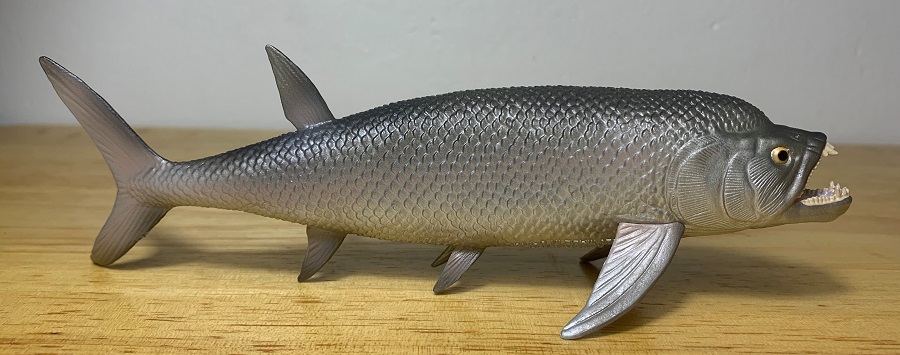
In the prehistoric popularity contest Xiphactinus ranks high for a fish. It has been a mainstay on many wish lists for several years, especially since CollectA released a mini figure of it in their Prehistoric Marine Tube. Aside from that mini figure the only other Xiphactinus that I’m aware of is by Fauna Casts and it is by no means a mass-produced toy.
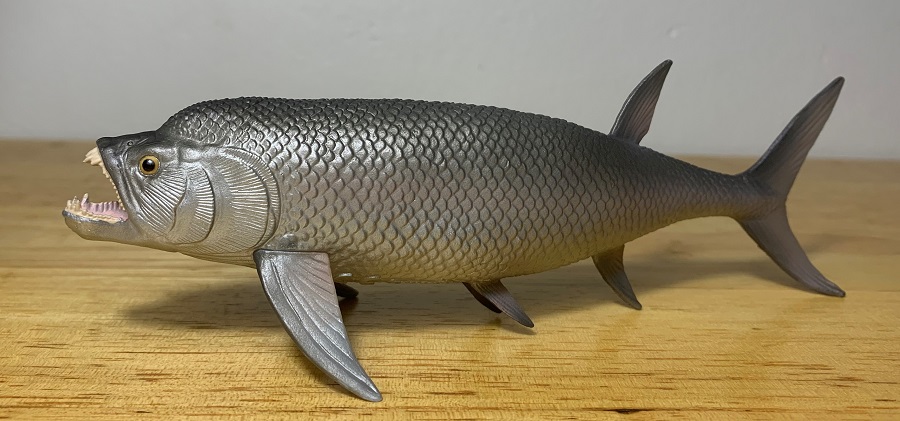
Xiphactinus is a genus of Teleost in the Ichthyodectiforme order that lived during the late Cretaceous period, 112-66 million years ago. Xiphactinus patrolled the waters of the western-interior seaway of North America, coexisting with various sharks, plesiosaurs, and mosasaurs.
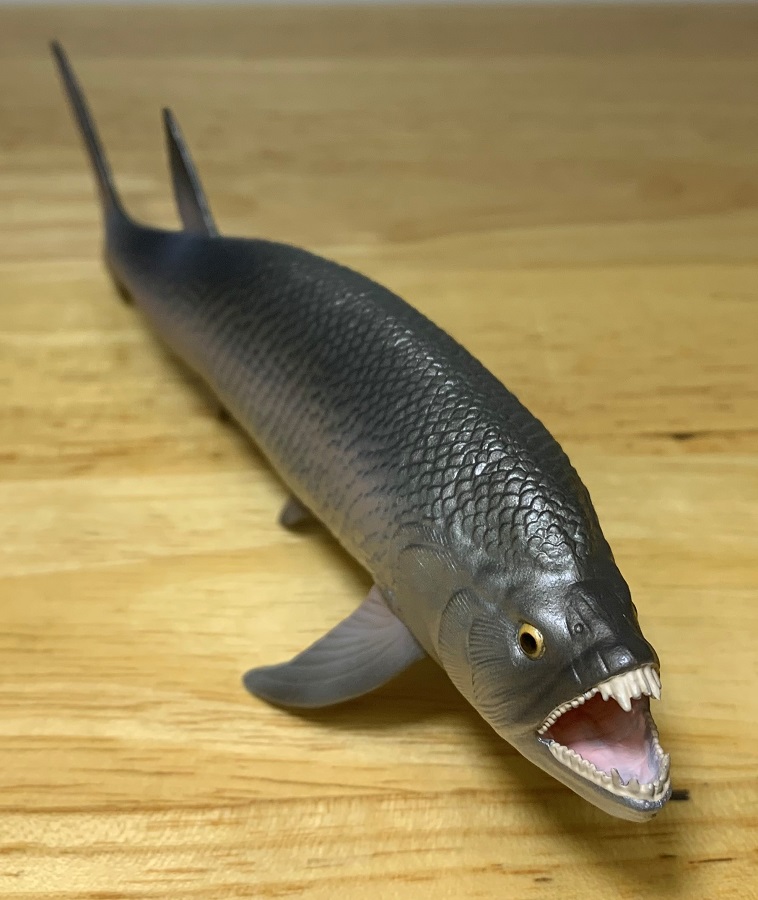
Although its remains have been found within the body of the shark Cretoxyrhina, it no doubt occasionally fed on these marine predators as well. Xiphactinus was a large apex predator itself, capable of reaching lengths of 20’. One remarkable 13’ specimen was preserved with the remains of a 6’ Gillicus arctuatis (another Icthyodectiforme) in its stomach. These sorts of remains conjure images of a voracious and gluttonous predator, and those adjectives are often applied to Xiphactinus. They also apply to a great many other fishes, so are kind of redundant. A largemouth bass is equally voracious, even if not as large and toothy.
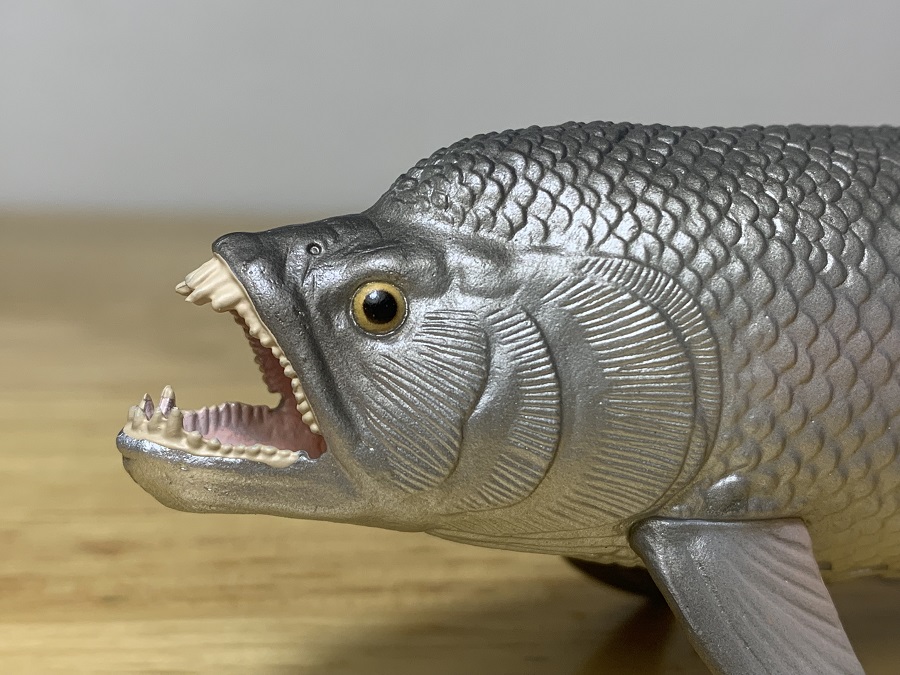
Xiphactinus is often compared to the extant tarpon in its overall appearance, but with its gnarly looking dentition I think the extant tigerfish of the Hydrocynus genus might be a better modern analog. No matter what you compare it to, Xiphactinus has no surviving close relatives. Xiphactinus is known from about a dozen specimens, and I encourage readers to check out the page on Xiphactinus audax over at the Oceans of Kansas website which features many excellent photographs of its fossils.
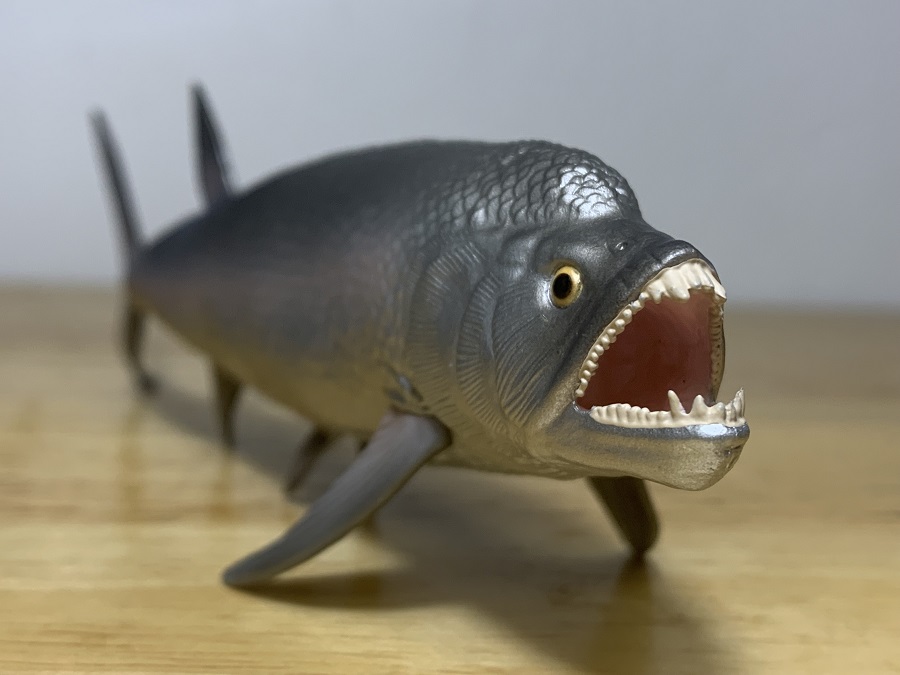
Finally moving onto the toy itself, the CollectA Xiphactinus measures 6.5”, rather small for a deluxe figure. This makes it 1/35 in scale if scaled down from 20’. It is presented in a fairly static posture, with a slight rightward bend in its tail and an open mouth. The figure is supported nicely by its stiff pectoral fins.
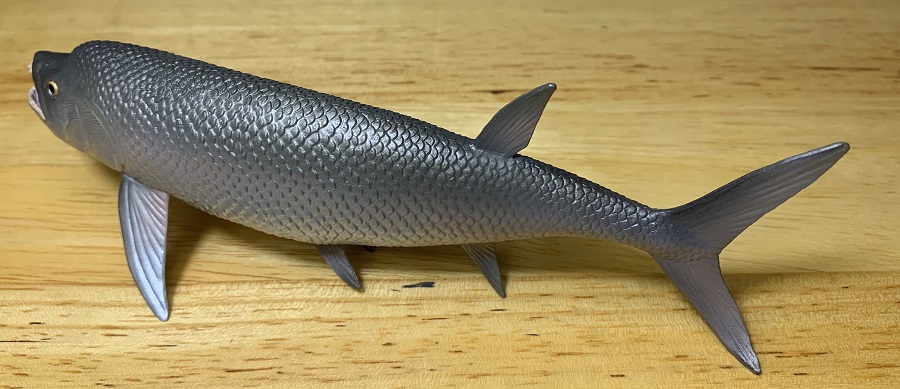
Because we have so many well preserved specimens of this genus there is little excuse for inaccuracies here and the figure appears well researched. The body is long, torpedo shaped with a lunate caudal fin that indicates this was a fast moving, open water predator. The lower jaw slightly protrudes past the upper and the entire snout is short and upturned, giving it a somewhat bulldoggish looking face but indicating that it likely stalked prey from below. The fins are all thin, pointed, and sickle-like in appearance with the dorsal fin being orientated directly above the anal fin.
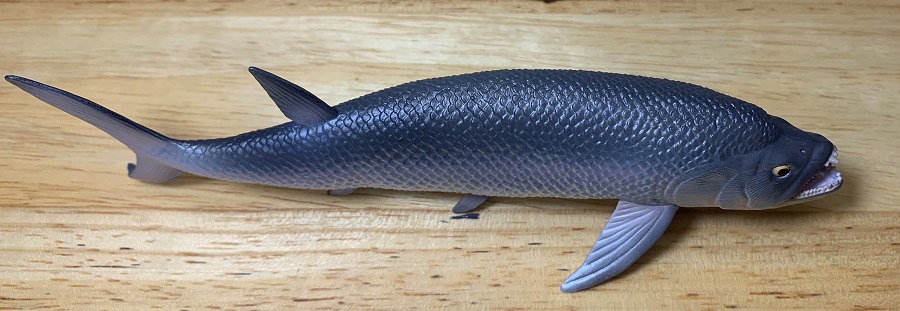

Looking at the finer details we see a covering of overlapping scales over the entire body and rays etched into the fins. The teeth are nicely sculpted at various sizes with the largest teeth being positioned in the front of the snout. The smallest teeth are absolutely miniscule and a testament to the artist’s skill.
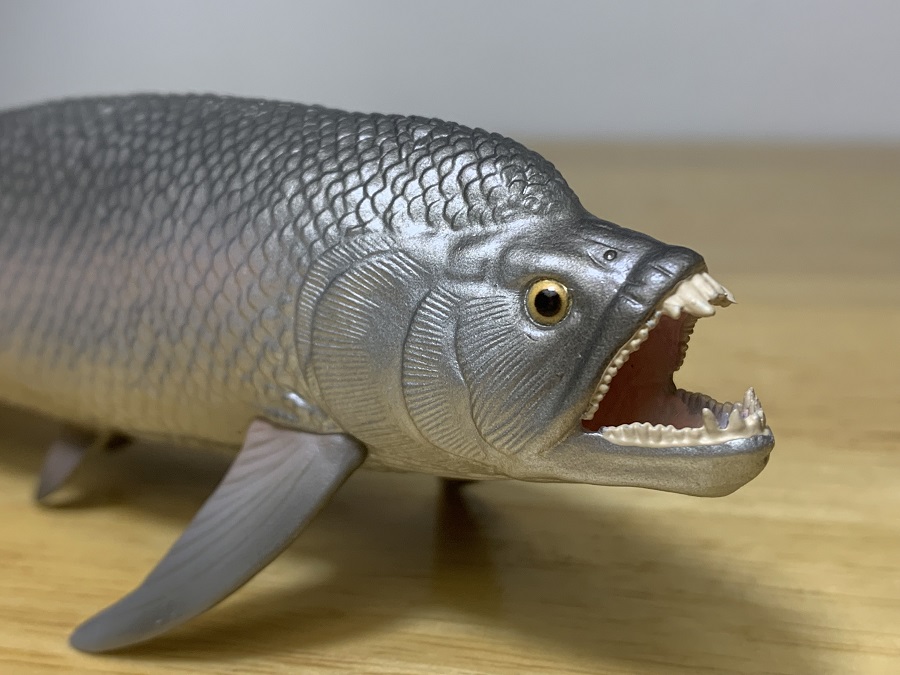
The operculum, or gill plates, have various radiating striations etched into them and look convincing in profile. CollectA appears to have sculpted the branchiostegal ray bones, under and behind the jaw, but neglected to give them any kind of branchiostegal membrane and they just run straight across the underside in an unconvincing way. I’m not sure as to the accuracy of this with regards to Xiphactinus but I’ve photographed it with the Safari goliath grouper to better illustrate what I mean. Notice how on the grouper the branchiostegal bones are pulled close to the operculum via a membrane, and then join together towards the front of the jaw. You can also compare it to the Fauna Casts figure. No vent is sculpted between the pelvic fins but that bit of anatomy can be hard to see on a fish anyway.
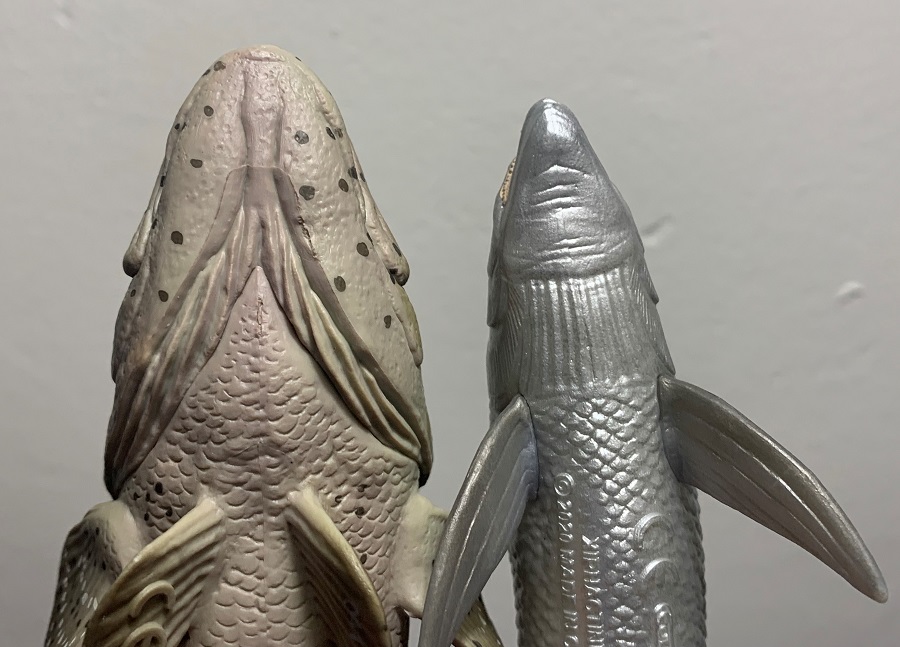
The colors here are conservative, being silvery gray with a dark to light gradient that creates some gradual countershading, very much like what you would see on a tarpon. I suppose this is a safe bet, and a likely color scheme, but it does feel a bit boring. I think a color scheme like what you might see on a sailfin, mackerel, or yellowfin tuna would be more exciting to look at and equally believable. The teeth are painted white, the inside of the mouth pink, and the eyes gold with black rounded pupils.
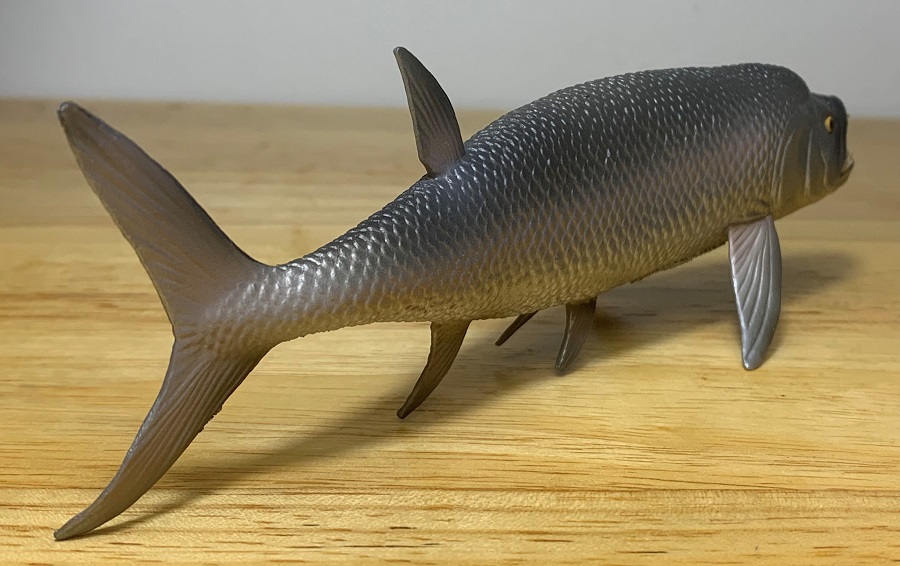
Overall, this is a five-star figure for me, and one that has been a long time coming. The world of prehistoric fishes is absolutely rife with strange and unique animals that have largely been ignored by toy companies. Fish so unusual that they make this Xiphactinus look rather basic by comparison. It’s a shame that these animals are ignored, but even extant bony fishes get sidelined by toy companies, so it really is no surprise, just a shame. Let CollectA know that you want more fishes by picking this one up. The CollectA Xiphactinus is new for 2021 and retails for about $9.00.
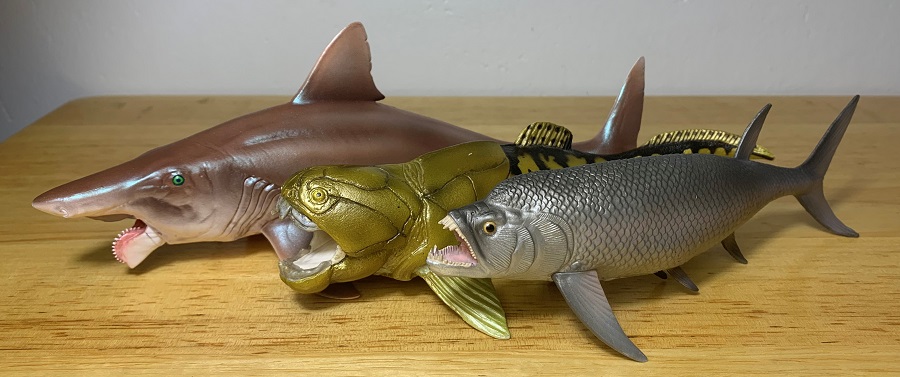
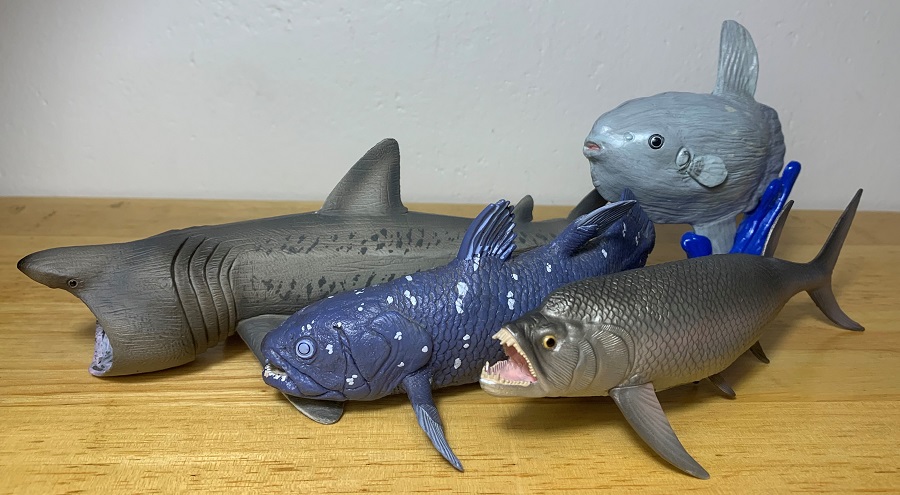
Support the Dinosaur Toy Blog by making dino-purchases through these links to Ebay and Amazon. Disclaimer: links to Ebay.com and Amazon.com on the The Dinosaur Toy Blog are often affiliate links, when you make purchases through these links we may make a commission

Magnificent figure When will it be available in Europe? It is a scientifically accurate figure.
Wow, finally! What a beautiful fish model! It’s been long overdue and doesn’t disappoint at all. Great review, I’m hoping it would be available in the US soon so I can order a couple of them.
I do hope it’s a successful venture and that CollectA will give us more fish in the future!
I live in the U.S. too but couldn’t wait for it to be available here. I ended up buying it on MiniZoo and am quite happy with the decision. I would recommend you do the same.
Great review. Odd about the branchiostegals, but at least that doesn’t show from most angles. I second suspsy’s sentiment about this flying off the shelves so we can get a good CollectA ichthyofauna going.
Got this fabulous fishie in the mail earlier this week. Love it. Here’s hoping it sells well enough to prompt CollectA to make more prehistoric fish that aren’t Megalodon or Dunkleosteus.